Special Report
This Is the Deadliest Battle in World History
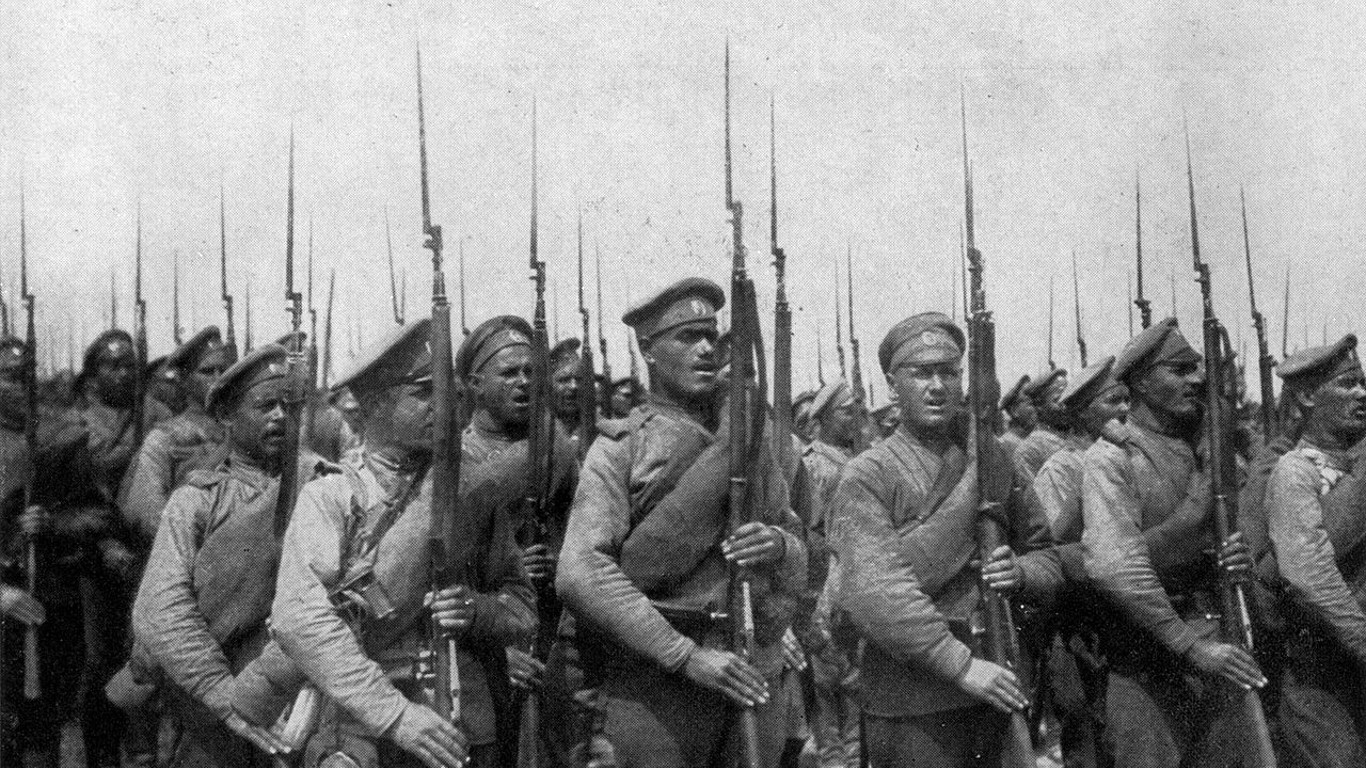
Published:

The history of war goes back thousands of years. Some of the earliest known wars were fought in Egypt and Sumer around 3000 B.C. The so-called Warring States Period in China (476-221 B.C.) unified that country. Alexander the Great conquered empires through a series of battles around 330 B.C.
While some of these early wars probably took tens of thousands of lives, modern warfare, with larger armies and more advanced weapons, pushed death tolls much higher. The deadliest battle in world history, however, took place some 762 years ago, when the Mongols and their allies sacked, possibly slaying as many as 2 million people.
In terms of overall war, WWII killed the most people of any conflict in history. Over its course, it is estimated that 70 million people died – most of them civilians. However, it is worth considering that there are “wars within wars” – individual battles – that are often particularly deadly and decisive. Among the best known of these is The Battle of Gettysburg, fought from July 1 to July 3, 1863. It helped the Union turn the tide against the Confederacy. (These are the deadliest battles in U.S. history.)
How deadly a war, and the battles within them, are often hinges on the evolution of weapons. What is called “modern war” began about the year 1800. It was characterized by the wide use of gunpowder and heavy weapons, which included, in particular, cannons. The earliest of these modern conflicts were the Napoleonic Wars (1803 to 1815). These had another characteristic. They were fought over large geographic areas that included multiple nations.
A more recent, but major, change in warfare tactics was the use of aircraft as weapons. Planes were not widely used until World War I, but eventually evolved to the point where they could level entire cities, which first happened in World War II. (These were the biggest battles of WWII.)
To determine the deadliest battles in world history, 24/7 Wall St. reviewed Deadliest Battles In Human History from World Atlas.
The deadliest battle in modern times took place in what is now western Ukraine during WWI – the so-called Brusilov Offensive, which pitted the Russian Empire against the combined forces of the German, Ottoman, and Austro-Hungarian empires (the Russians were victorious). This three-and-a-half month struggle took 1.6 million lives.
Even more devastating, however, was the 13th-century sack of Baghdad, in what is now Iraq, by the Mongols under Hulagu Khan, aided by Armenian, Georgian, and Persian forces. In overrunning the city, the capital of the Islamic Abbasid Caliphate, the Mongols slaughtered as many as 2 million people, most of them civilians.
Here are the 10 deadliest battles of history
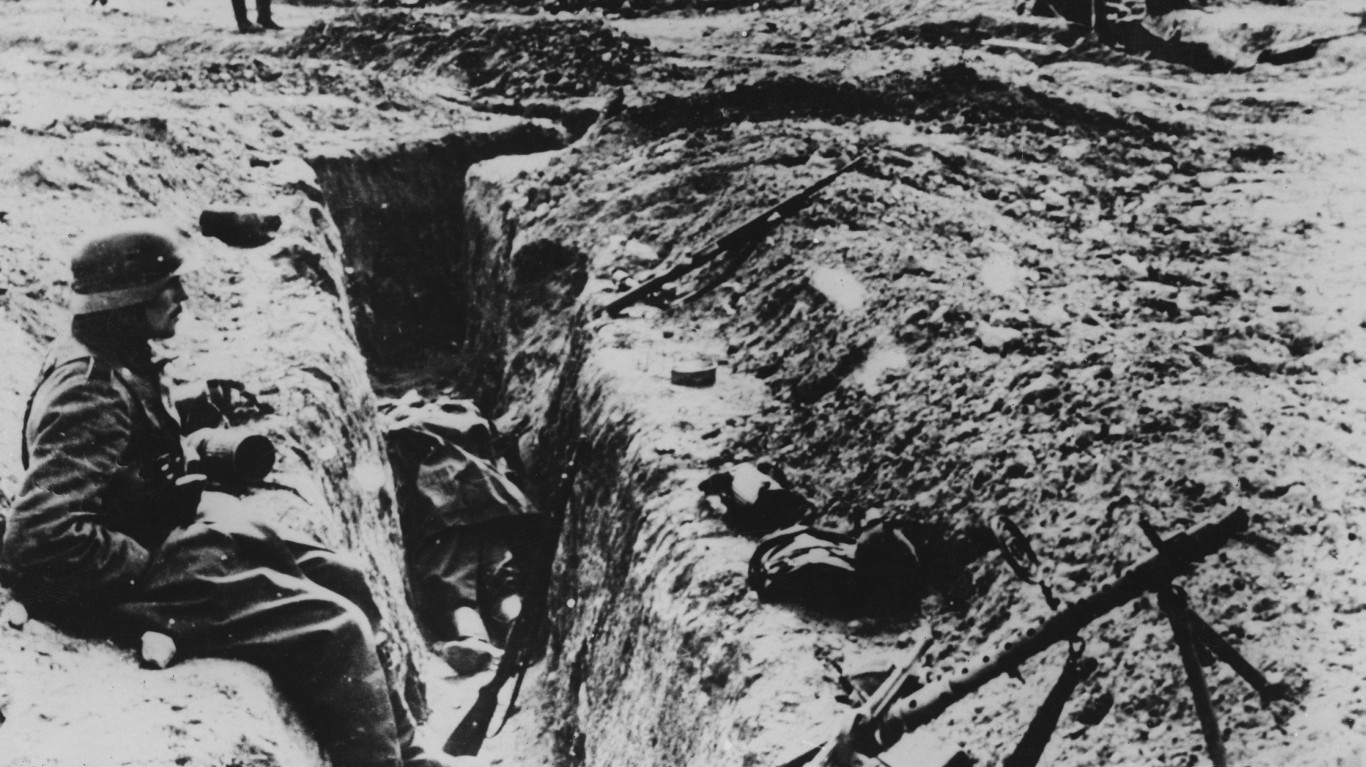
Siege Of Leningrad
> World Atlas estimated casualties: 1.12 million
> Combatants: Germany, Finland, Soviet Union
> Location: Soviet Union
> Year(s): 1941-1944
The 872-day Siege of Leningrad marks one of the darkest periods of World War II. Instead of invading and occupying the city now known by its original name, Saint Petersburg, the Nazi Wehrmacht (aided by its Finnish allies) blockaded and bombarded this industrial center for months. Hundreds of thousands of Leningraders died from starvation, brutal winter weather, and disease, and some of the most desperate resorted to cannibalism.
[in-text-ad]
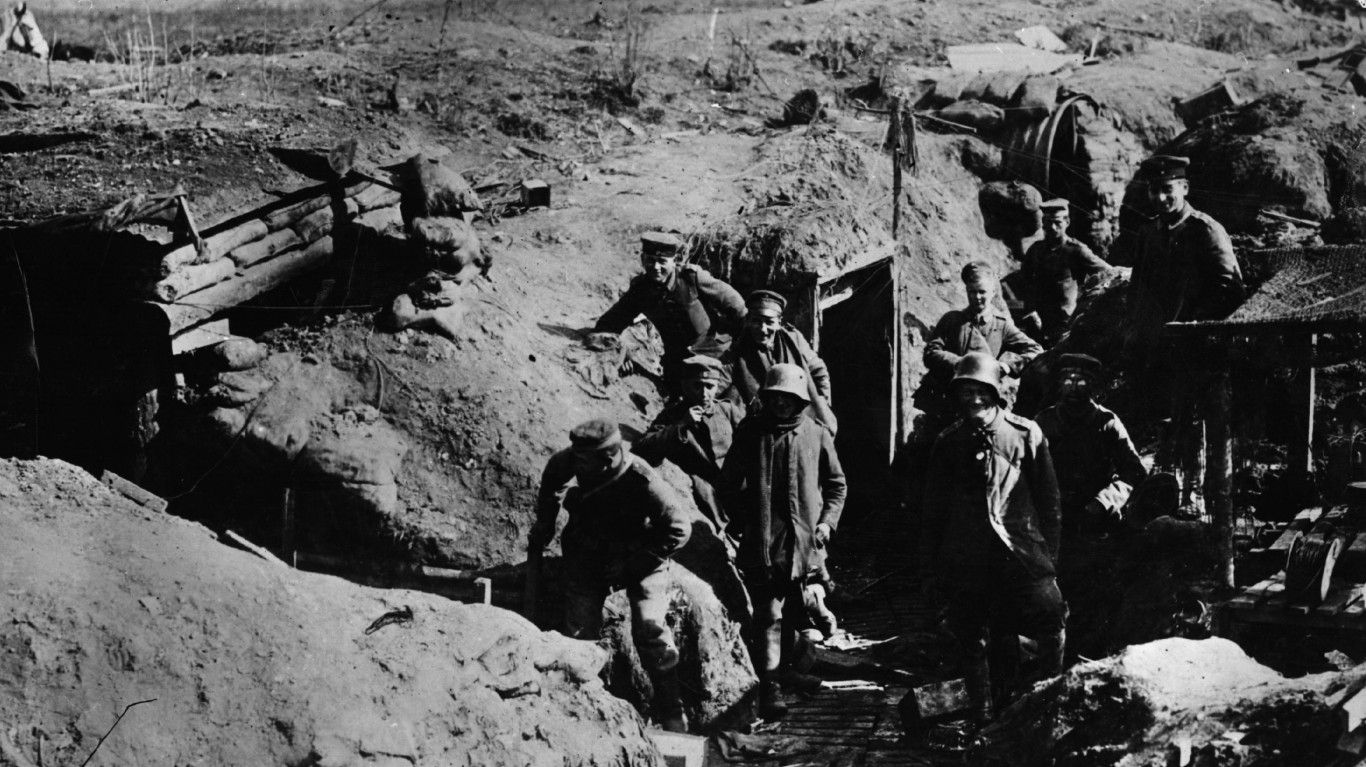
The Somme
> World Atlas estimated casualties: 1.12 million
> Combatants: United Kingdom, France, Germany
> Location: France
> Year(s): 1916
The Battle of the Somme, named after a river, is one of three World War I battles that made this list. This British-French operation was intended to defeat the Germans on the Western Front, but it turned into a brutal fight of attrition for which there was no clear winner. The British suffered more than 57,000 casualties (including 19,240 soldiers killed) in the first day of fighting alone in the battle that raged for more than four months.
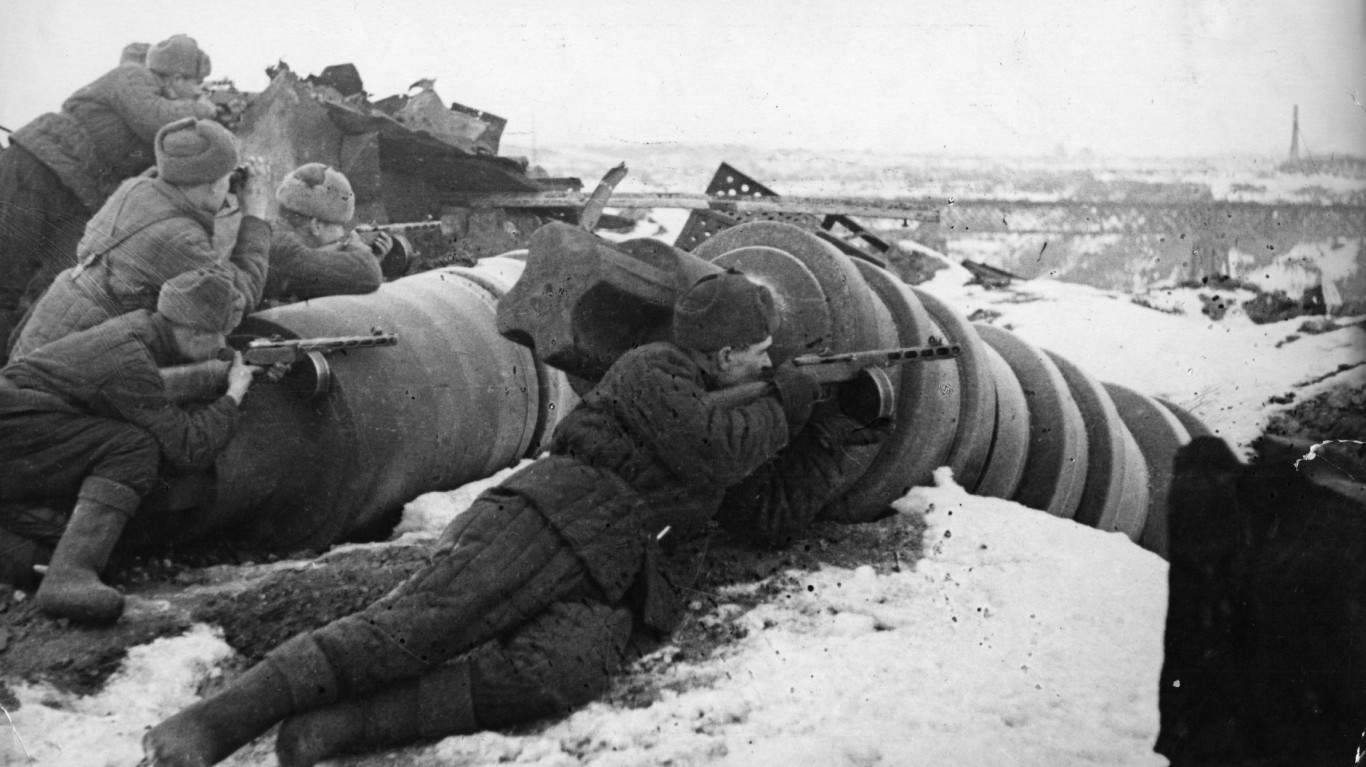
Stalingrad
> World Atlas estimated casualties: 1.25 million
> Combatants: Germany, Soviet Union
> Location: Soviet Union
> Year(s): 1942-1943
The Battle of Stalingrad is one of six World War II battles on this list and one of five that involved the Red Army either beating back the Nazis or marching to Berlin.
Hitler was determined to take Stalingrad (now called Volgograd) on the Nazi drive to smash Russian forces and seize oilfields in the Caucuses. But Stalin was equally determined to hold the city at all costs. The Red Army succeeded, but Russian troops paid dearly for the victory after months of urban warfare among the ruins and rubble of the bombed cty.
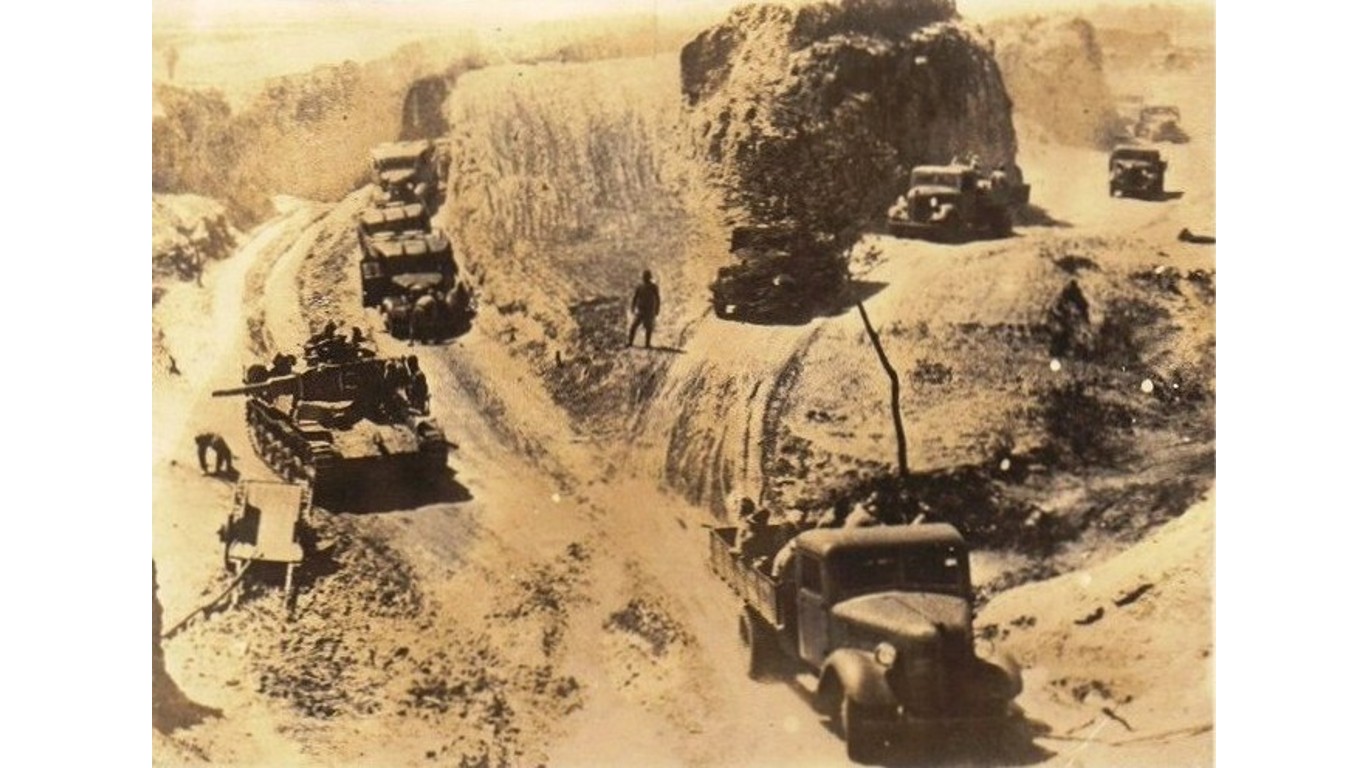
Ichi-Go
> World Atlas estimated casualties: 1.3 million
> Combatants: Japan, China, United States
> Location: China
> Year(s): 1944
Operation Ichi-Go, the largest and bloodiest military operation in Japanese history, involved three major military clashes between the Imperial Japanese Army and the National Revolutionary Army of China (with air support from U.S. forces) that took place over eight months in three Chinese provinces.
“Ichi-Go” is a part of a Japanese idiom that means “one time,” showing the Japanese viewed these fights as a one-time opportunity to seize Allied airfields and open up land routes to reduce dependence on maritime military assets. The Chinese refer to it as the Battles of Henan-Hunan-Guangxi.
[in-text-ad-2]
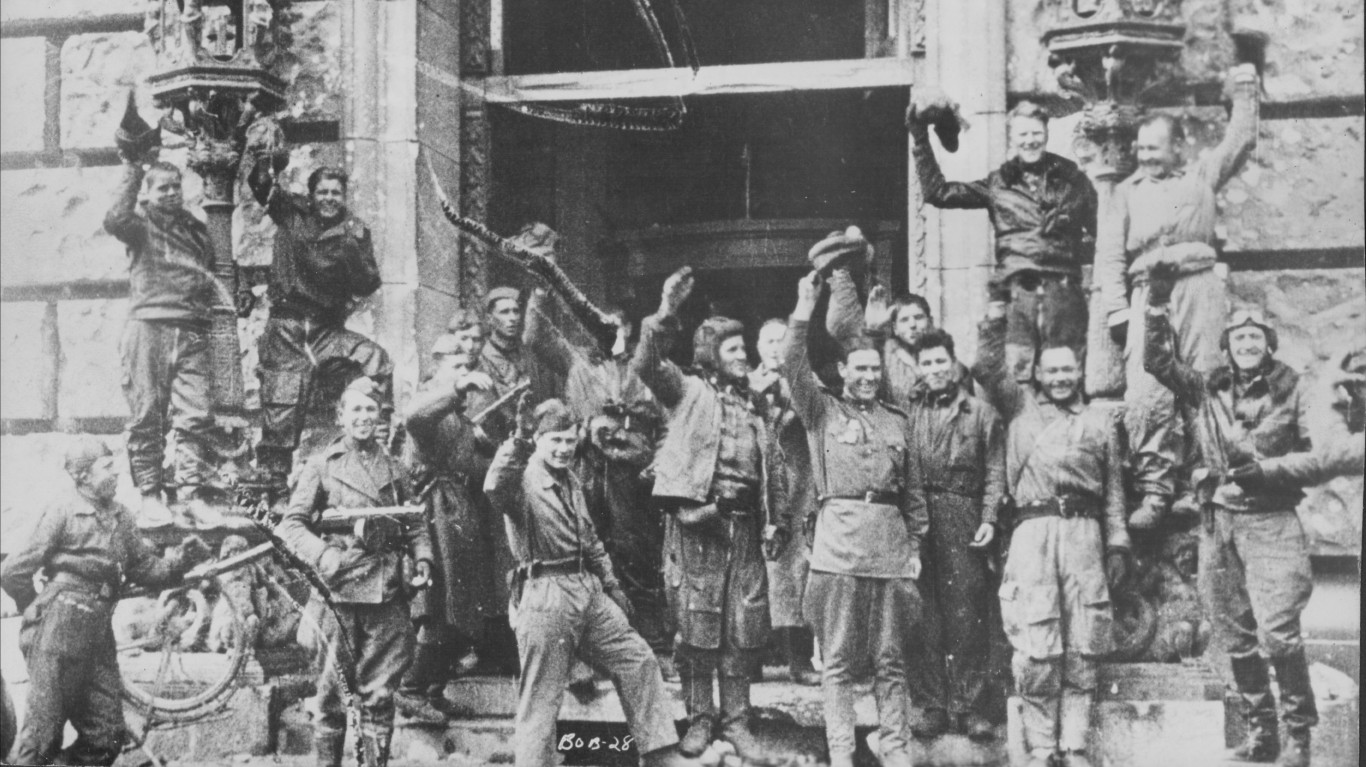
Taking of Berlin
> World Atlas estimated casualties: 1.3 million
> Combatants: Germany, Soviet Union
> Location: Germany
> Year(s): 1945
Hitler’s refusal to surrender, perhaps fueled by his drug use as some historians claim, meant the Allies had to pound their way into the heart of Germany. Nazi forces pushed back at almost every opportunity. By the spring of 1945, the Red Army had Belin in its sights after losing millions of soldiers and civilians over the course of World War II.
The Red Army’s brutality on its march to Berlin (revenge for Nazi barbarism) meant many Nazi troops and civilians believed they would be executed if they surrendered to the Russians. This led to a prolonged fight to the death in any encounter with Russian troops.
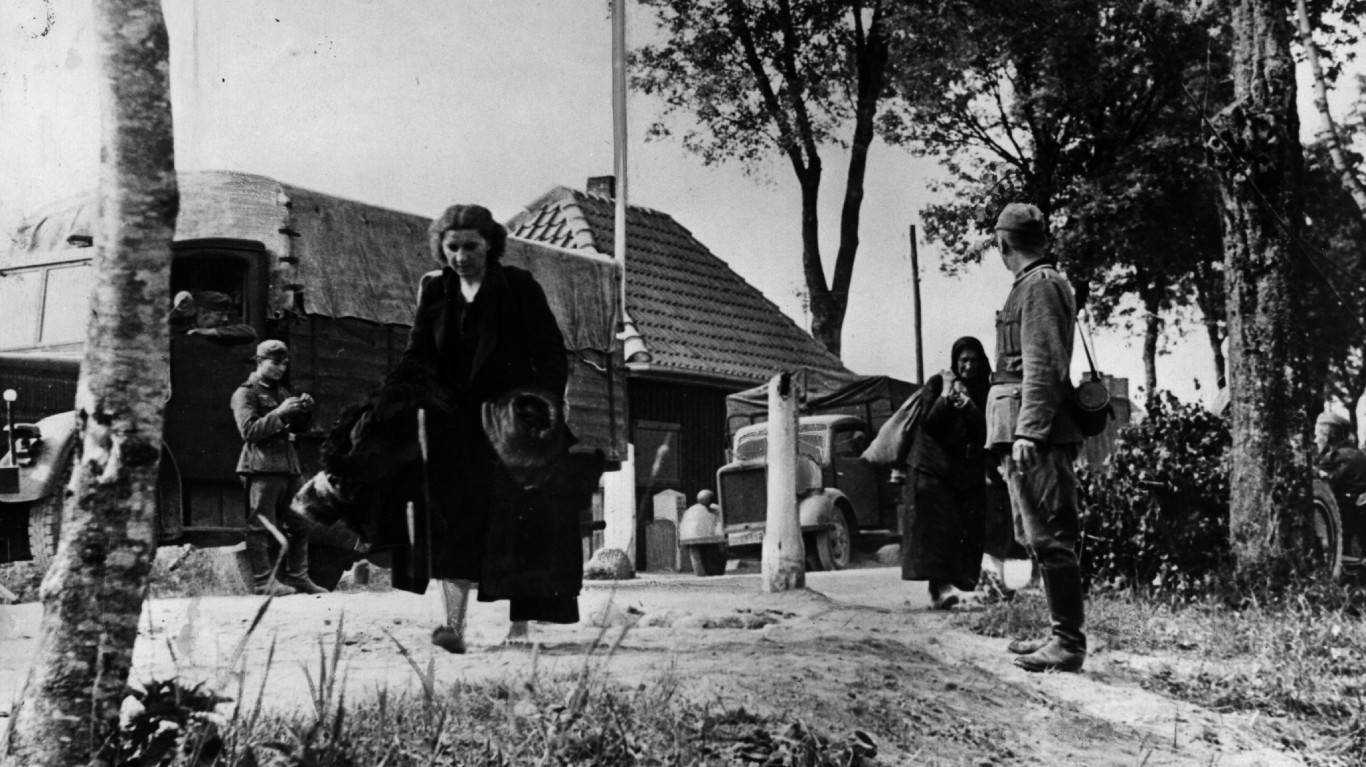
Operation Barbarossa
> World Atlas estimated casualties: 1.4 million
> Combatants: Germany, Soviet Union
> Location: Soviet Union
> Year(s): 1941
The surprise Nazi invasion of the Soviet Union that began on June 22, 1941 involved more 10 million combatants over several months, a staggeringly high number by any standard of warfare. Some 5.5 million Russians faced off against 3.5 million Germans and 700,000 German-allied troops, mainly from Finland, Romania, Hungary, Italy and Slovakia.
[in-text-ad]
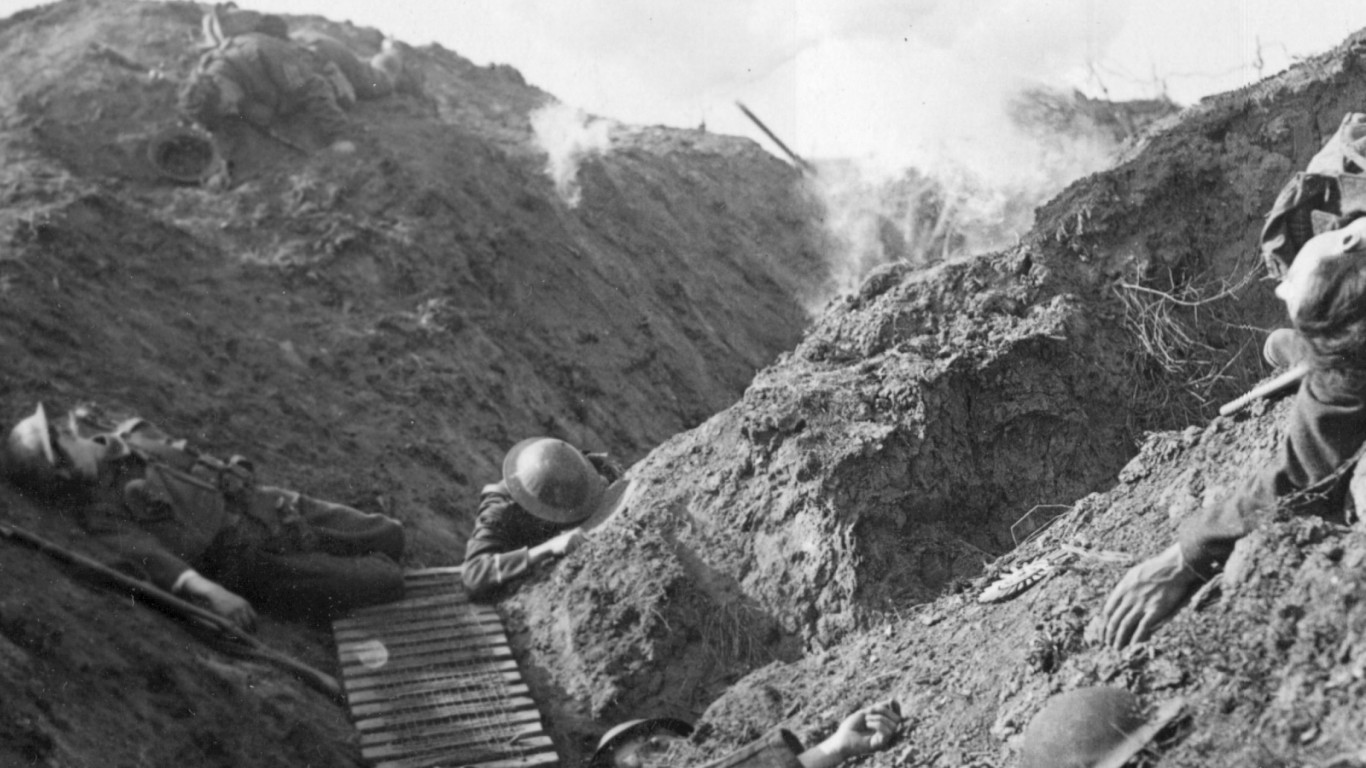
German Spring Offensive
> World Atlas estimated casualties: 1.55 million
> Combatants: Germany, France, United Kingdom, United States
> Location: France and Belgium
> Year(s): 1918
The German Spring Offensive of 1918 is one of three World War I battles on this list and one of eight on this list instigated by German military offensives. After the Russian resistance collapsed in 1917, the Germans pivoted westward in an attempt to end the war before U.S. military power could be fully deployed to Western Europe. After nearly four months of barbaric trench warfare, the Germans failed in their effort to win the war before the U.S. arrived to help its European allies defeat the German Empire.
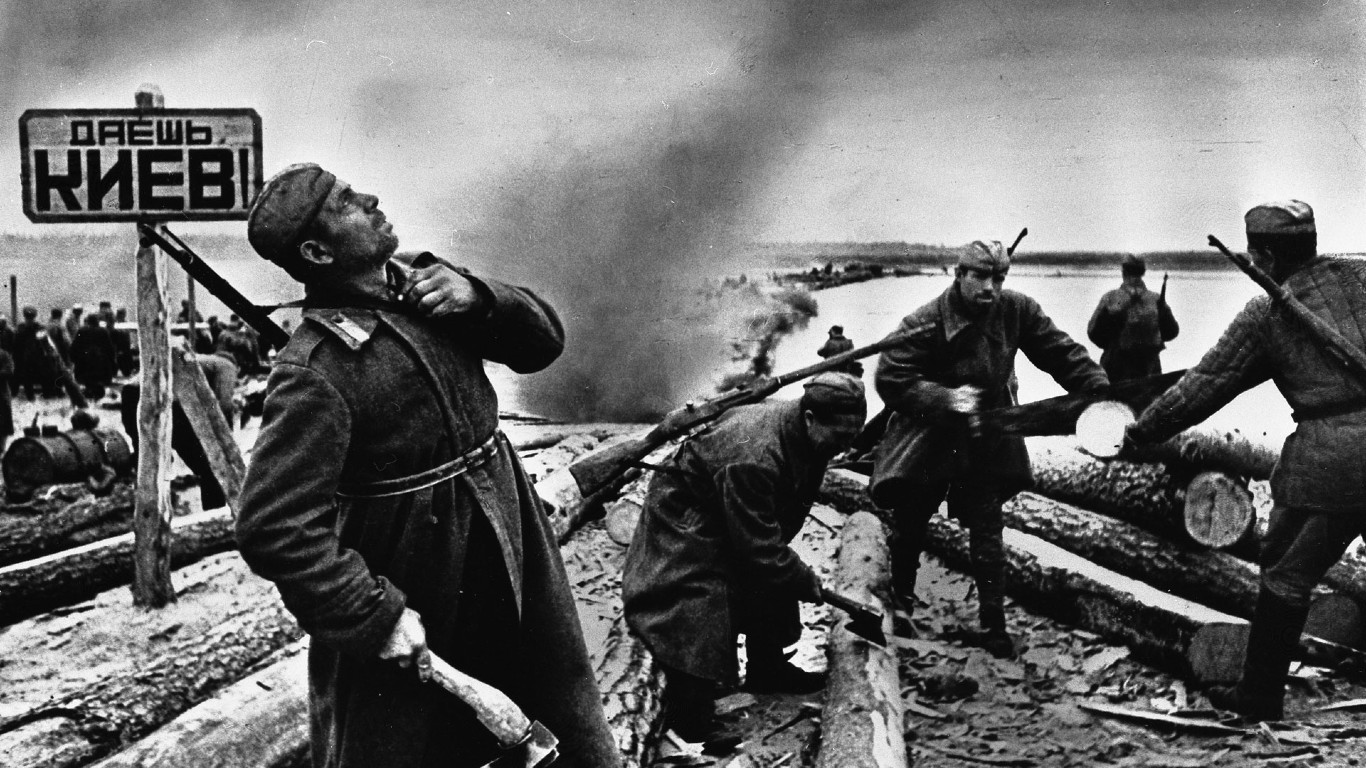
Battle of the Dnieper
> World Atlas estimated casualties: 1.58 million
> Combatants: Germany, Soviet Union
> Location: Soviet Union
> Year(s): 1943
The Battle of Dnieper (named after a major River in Eastern Europe) is yet another battle on this list in which the Soviets took heavy casualties defending against German attacks. The Nazis attempted to build an “East Wall” along the western shore of the Dnieper in order to block Russian advances.
From August to December 1943, 4 million soldiers on both sides engaged in fierce fighting. Though the Red Army took more casualties, the Russians managed to punch through the German wall, making the Nazi withdrawal from the USSR inevitable.

The Brusilov Offensive
> World Atlas estimated casualties: 1.6 million
> Combatants: Russian Empire, Austria-Hungary, Germany, Ottoman Empire
> Location: Russian Empire
> Year(s): 1916
The Brusilov Offensive was another Russian victory against the Germans that involved heavy Russian casualties. Named after the Russian general who spearheaded the military victory, one of the most successful in World War I, the summertime offensive sparked the demise of the Habsburg Empire. Germany sent military reserves to support the Empire, which weakened them on the Western Front.
[in-text-ad-2]
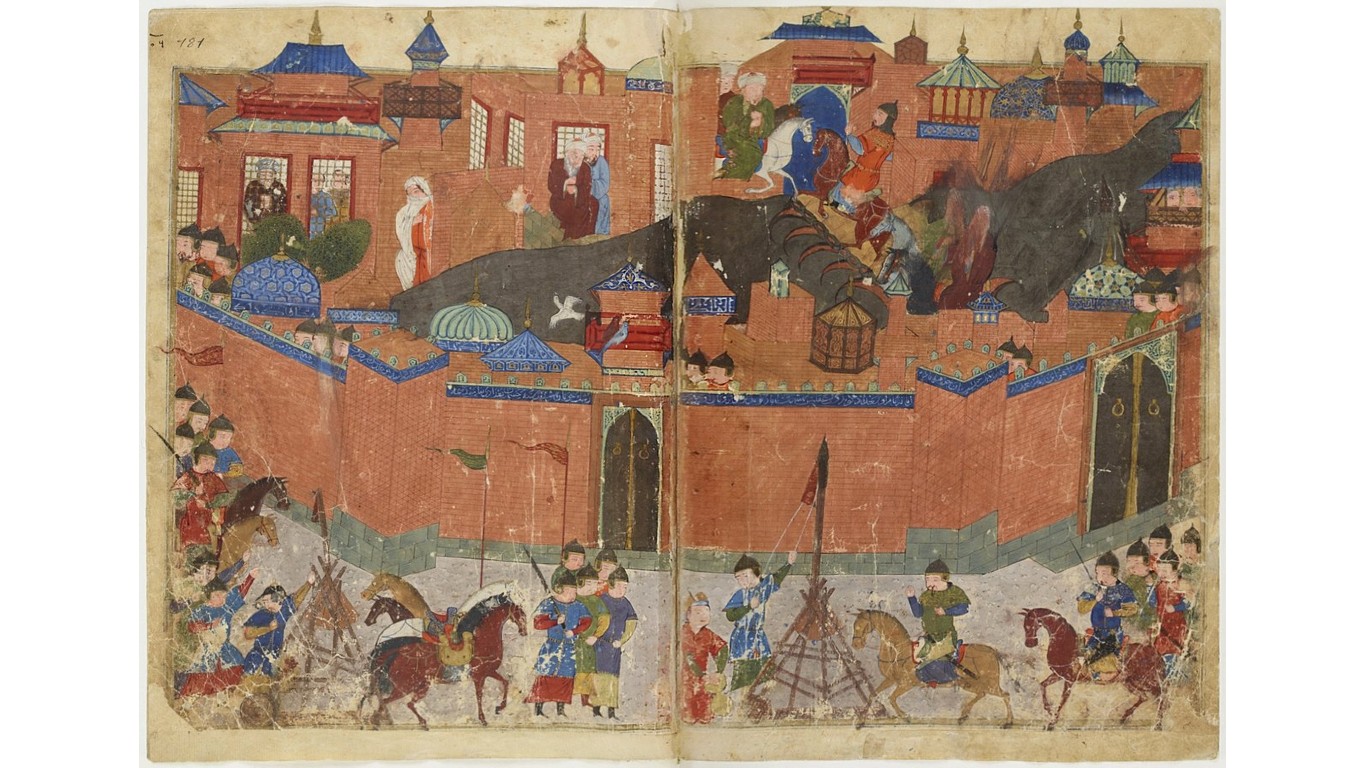
Mongol Sacking Of Baghdad
> World Atlas estimated casualties: 2 million
> Combatants: Mongol Empire, Abbasid Caliphate
> Location: Abbasid Caliphate
> Year(s): 1258
The 13th century sacking of Baghdad, then one of the world’s great intellectual and scientific centers, is incomparable. The other battles on this list raged for months (and in one case, for more than two years) and took place from 1916 to 1945, during the World Wars. But the brutality in this case was swift and horrendous to the civilian population. After a 12-day siege, the tribal horde entered the city and indiscriminately killed almost anyone they could find. The short battle marked the end of the Islamic Golden Age.
After two decades of reviewing financial products I haven’t seen anything like this. Credit card companies are at war, handing out free rewards and benefits to win the best customers.
A good cash back card can be worth thousands of dollars a year in free money, not to mention other perks like travel, insurance, and access to fancy lounges.
Our top pick today pays up to 5% cash back, a $200 bonus on top, and $0 annual fee. Click here to apply before they stop offering rewards this generous.
Flywheel Publishing has partnered with CardRatings for our coverage of credit card products. Flywheel Publishing and CardRatings may receive a commission from card issuers.
Thank you for reading! Have some feedback for us?
Contact the 24/7 Wall St. editorial team.